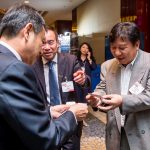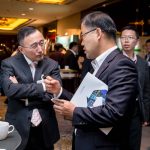The 11th annual Automotive Logistics China conference was held for the first time in the south-western city of Chengdu, a symbol of the automotive industry’s westward development and the centre of the revival of the old ‘Silk Road’ trade routes emphasised by the government’s ‘One Belt, One Road’ policy. Christopher Ludwig reports on the market and political forces putting pressure on Chinese automotive logistics to become even more competitive. Contribution by Rachael Hogg
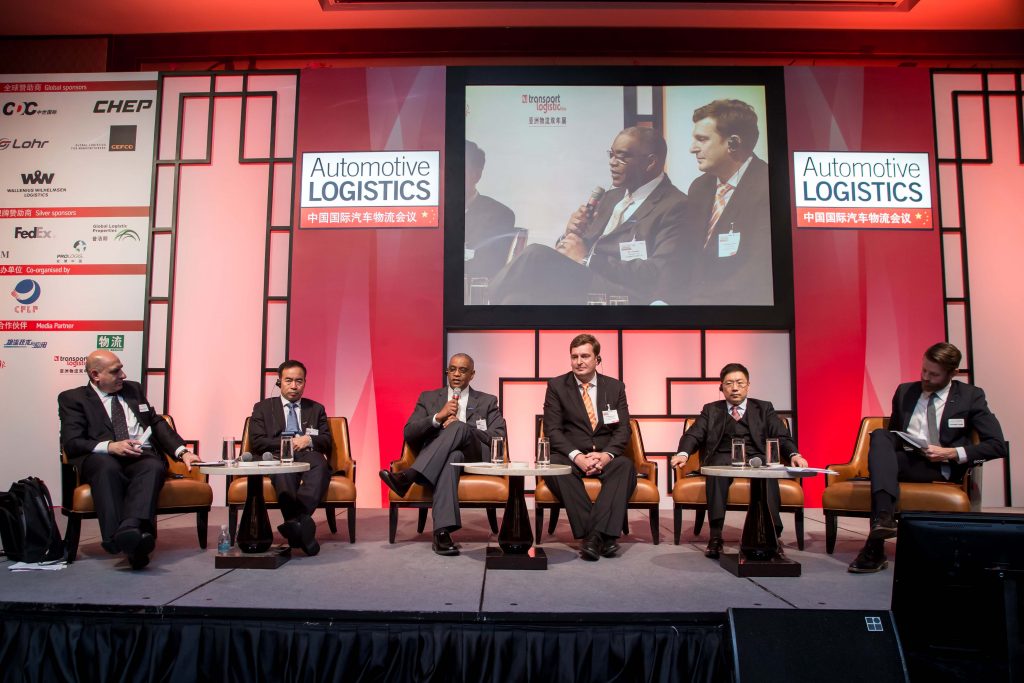
Reading the economic mood of China’s automotive supply chain executives today is more confusing than it has been in recent years.
On the one hand, carmakers, tier suppliers and logistics providers continue to invest strongly in the manufacturing base and supply chain of the world’s largest vehicle market, where 24.6m vehicles were sold last year – a rise of around 4.6% compared to 2014. Furthermore, sales in the first quarter of 2016 were up around 6% compared to the same period last year.
Meanwhile, demand for more sophisticated logistics services is rising as product and part number complexity increases and China’s production and distribution networks spread further across the country. Carmakers are building or expanding plants in traditional manufacturing and consumption centres around Shanghai, Beijing and Guangzhou, as well as further west, including along the Yangtze River in Wuhan; in the south west in Chongqing and in Chengdu, the capital of Sichuan province; as well as in other directions, such as Heilongjiang province, in the far north east.
This changing geography has prompted demand for multimodal routes and services in China, with rail movements of finished vehicles rising and both short-sea shipping and barge movements along the Yangtze growing strongly.
In this report...
On the other hand, however, despite the volume growth and rising logistics demand, many executives in China have pointed to signs of market stagnation and higher cost pressures.
At a macroeconomic level, the Chinese economy has slipped in some areas. Its annualised growth rate of 6.7% during the first quarter of 2016 may be the stuff of dreams for most economies, but it is among the lowest the country has seen for decades. Manufacturing and purchasing indices, meanwhile, turned negative last year while commodity prices, including metals and oil, have suffered badly. China’s stock market has also been in turmoil since last summer, contributing to global declines in equities.
The car business has not been immune. While SUV sales grew by some 50% in 2015, many other vehicle segments experienced sales declines. Some OEMs cut prices to combat their rising stocks of finished vehicles, as well as trimming production and vehicle imports.
China’s automotive industry would probably have suffered an outright fall last year and possibly even this year, were it not for government stimulus.
Shen Jinjun, chairman of the Chinese Automobile Dealers Association, pointed out that vehicle sales in the first three quarters of 2015 were nearly flat compared to the same period of 2014. In the fourth quarter, however, the government cut the tax in half for vehicles with engine sizes 1.6 litres or smaller, prompting a significant rise in sales. While sales growth continued in the first quarter, Shen warned that it was still relatively low, considering the incentives, and that volume could fall again once tax cuts were withdrawn.
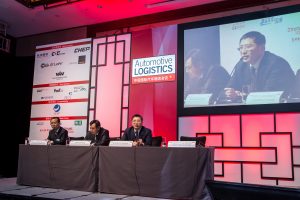 Wu Songquan, from the China Automotive Research Centre, said sales had the potential to reach 35m units per year
Wu Songquan, from the China Automotive Research Centre, said sales had the potential to reach 35m units per year“When the government made the same tax cut after the financial crisis in 2009, sales grew 46%,” he said. “Now, such incentives can only push up growth by single digits.”
China’s international vehicle trade has also seen significant falls, with little recovery expected this year, according to Wu Songquan, director of the auto industry policy research section of the China Automotive Technology and Research Centre. He predicted exports would fall again this year after they fell to 750,000 units last year.
Vehicle imports into China, meanwhile, which had enjoyed substantial growth and reached record levels of 1.26m units by 2014, fell in 2015 to 1.18m units. Wu predicted imports would tumble by another 10-15% this year.[sta_anchor id="1"]
Increasing pressure and competitionWith slower industrial activity and growth alongside tough competition, manufacturers in China have been responding by considering logistics costs and waste more carefully.
“China's automotive industry is slowing down,” said Xu Guangqing, managing director of logistics engineering and operations at SAIC General Motors (SGM), GM’s largest joint venture in China. “For automotive logistics, close and fierce competition will be a permanent thing, which is why we have to look to innovations and technology, such as big data analytics and further automation, to reduce costs.”
News stories from Automotive Logistics China
- New Silk Road gets back on the rails
- Local providers go global to survive
- New truck limits force vehicle logistics sector to adapt
- Catching up with digital and automation trends
- Holding on to spare parts business
- Panel discussion: Debating where to go from here
- Full videos of the main sessions
- Video interview will be added shortly
The slowdown has put reducing waste in inbound logistics into sharp focus, he said, including working more closely with logistics providers to better plan volume flows and reducing the large amounts of inventory carmakers in China typically have tier suppliers hold on their behalf.
“Logistics cost and services become critical during a market slowdown,” Lindsey said. “Currently, we're looking to our partners and LSPs to see how we can reduce waste on inbound transportation. It's going to take an LSP that understands transportation networks and how to leverage volumes to optimise shipping inbound.”
Executives from tier suppliers have also noted declines, with more pressure on their logistics. “The industry is entering a down-cycle and it is going to lead to a slowdown in vehicle sales and output,” said Jason Zhu, logistics and materials director for China at tier supplier Lear. “We’re going to need to consider supply chain consolidation more closely.”
David Zhang, director of integrated supply chain in Asia Pacific for Delphi, admitted that growth was “not as good as it was before”. He also pointed to a sharp rise in part numbers and product complexity, combined with lengthening supply chains as more production spreads west and north across the country.
Andreas Subbe, director of logistics for Asia Pacific at Continental Automotive, agreed that slower growth and more disparate supply chains were putting pressure on the supply base.
 Delphi's David Zhang said that more supply chain complexity, coupled with lower growth, would challenge tier suppliers
Delphi's David Zhang said that more supply chain complexity, coupled with lower growth, would challenge tier suppliers“Times will be more challenging, and you will see more focus on the competitiveness of the supply chain,” said Subbe. “There will be more competition on the OEM side and pressure on the tier one side.”
Logistics executive in China have also expressed concerns over rising costs – notably wages, real estate and production-related expenses. This year also marks an important change for the vehicle logistics sector there: after years in which the country’s finished vehicle truck carriers consistently ran equipment far in excess of the legal 16.5-metre maximum truck length, government ministries have agreed to a tightening-up of the rules that will come into force on July 1st.
The regulation, known as GB1589, sets new standards and will crackdown on the practice of overloading trucks. SGM’s Xu predicted this would cost the industry tens of billions of yuan per year, with average loads falling from as many as 22 vehicles to as few as 6-8, depending on model types. “There will be temporary pains and hard times, especially since the macro-economy isn't doing well,” he said.
Positive potentialDespite these challenges, current growth and prospects for the automotive industry in China are much higher than in most major or emerging markets, making a ‘slowdown’ here somewhat relative.
Strong SUVs sales are expected to propel the passenger vehicle segment, for instance, even as commercial vehicles remain in decline. Delphi’s Zhang pointed to industry forecasts for passenger vehicle production to rise from 18.6m in 2015 to more than 20m this year and more than 22m by 2018, meanwhile. The end of China’s one-child policy could also lead to more demand for family-sized cars and SUVs.
With China’s vehicle penetration still relatively low compared to other countries, sales have the potential to reach 35m units per year in the medium term as the market matures, according to Wu Songquan at the China Automotive Technology and Research Centre.
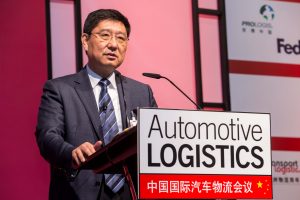 CFLP's Cai Jin pointed to stable growth and improving macro-economic indicators
CFLP's Cai Jin pointed to stable growth and improving macro-economic indicatorsInternational vehicle trade is also expected to eventually pick back up. Rider Liu, head of commercial China for Wallenius Wilhelmsen Logistics, shared predictions that suggest imports will move back towards their high of nearly 1.25m units per year by 2017 and stay constant for the rest of the decade. Passenger car exports, meanwhile, could double by 2020 to around 575,000 units.
Vehicle exports to the West, which have so far been minimal, may also finally increase. Last year, Volvo Cars became the first premium OEM to export cars from China with shipments to the US of a long wheelbase version of the S60, built in Chengdu. Magnus Ödling, director of inbound for Asia Pacific at Volvo Cars, said the carmaker was targeting exports to the rest of Asia as well, and potentially beyond that in future. GM has also recently started exports of certain Buick and Cadillac models built in China to the US.
Companies in China are thus trying to balance costs in response to possible declines, even as they prepare to capture further growth. Andreas Subbe said that while Continental needs to reduce logistics costs, the tier supplier also aims to double its sales in China by 2020.
The Chinese government has also tried to maintain stability in the economy, with officials emphasising ongoing market and supply side reforms. Cai Jin, vice-president of the China Federation of Logistics and Purchasing (CFLP), a government-linked association, pointed to China’s current GDP growth rate as “reasonable – and moving from good to better”.
He also pointed to indicators that the economy was picking up, including steady increases in consumer prices, along with some recovery in commodity prices. Purchasing and manufacturing indices have also moved back into positive territory, while corporate profits have increased. Automotive growth, meanwhile, has outpaced most of the Chinese economy, said Cai.[sta_anchor id="2"]
Mixing market and government forcesThough many economists and analysts increasingly view China’s official economic statistics with scepticism, it is hard to separate government policy and intentions from outcomes in the Chinese automotive industry and its supply chain.
Although private firms or foreign joint ventures control much of China’s car manufacturing, Beijing’s policies, funding and objectives have great influence. Production, expansion and even logistics decisions are driven in significant if not equal measure by government and market forces.
It is not only a question of temporary tax incentives to stimulate sales, although this has certainly been important. More broadly, the central government, together with provincial and municipal authorities, has encouraged OEMs to build plants in new locations with its ‘Go West’ strategy, which was launched last decade to rebalance the economy from its concentration of wealth on the east coast. Now, China’s ‘One Belt, One Road’ policy is aimed at further regional development, and is encouraging companies to expand logistics and trade routes across China to south-east Asia, central Asia, Europe, the Middle East and beyond.
Meanwhile, in an effort to respond to rising labour costs and a loss of competitiveness, the government’s ‘Made in China 2025’ programme – a Chinese answer to Germany’s ‘Industry 4.0’ – aims to improve manufacturing productivity through advanced automation, improved IT links, more research and development spending and connected internet technology.
The government’s ambitious plans for vehicle electrification will also have a significant impact on R&D and technology investments.
While all governments set industry targets and assert influence via regulation and targeted funding, China’s one-party system pulls together market development and state objectives more directly. Ma Zengrong, general secretary for CFLP's China Automotive Logistics Association (CALA), an important, Beijing-linked organisation (and co-organiser of Automotive Logistics China) explained how this unique relationship had impacted on automotive logistics.
“In China, on the one hand, we respect market forces; but on the other hand we respect the power of the communist party. The party will always find the right direction for China, like with ‘Go West’ and ‘One Belt, One Road’, which are strategic choices by the government to further develop trade and regions,” he said. “Government power plus market forces are quite strong and there has been a lot of activity taking place along the belt and road routes, including for rail. We need to thank the government for its favourable policies to encourage this.”
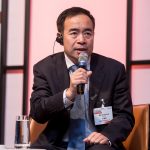 "In China, we respect market forces; but on the other hand we respect the power of the communist party... Government power plus market forces are quite strong and there has been a lot of activity taking place along [One Belt, One Road] routes, including for rail. We need to thank the government for its favourable policies to encourage this." - Ma Zengrong, China Automotive Logistics Association
"In China, we respect market forces; but on the other hand we respect the power of the communist party... Government power plus market forces are quite strong and there has been a lot of activity taking place along [One Belt, One Road] routes, including for rail. We need to thank the government for its favourable policies to encourage this." - Ma Zengrong, China Automotive Logistics Association
At the same time, the industry is clearly following market demand and developments – not least because, somewhat ironically, such liberalisation is a major platform for the government of Xi Jinping – who declared that markets would play a “decisive role” in the economy early in his premiership – and for the 13th five-year plan, the draft for which was released in March.
Dr. Zhang Xiaodong, dean of the Transportation Institute at Beijing Jiaotong University, admitted there was still more room for market forces to influence automotive supply chain and logistics decisions – especially at local government levels. However, he said this was now a major priority for the government.
“That is why in the fourth quarter of last year, the Ministry of Commerce issued a document, the essence of which is really to give full play to the spirit of market forces,” he said.
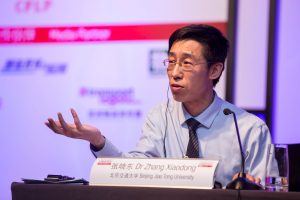 Professor Zhang Xiaodong suggested there was more room for market forces to influence Chinese automotive logistics, but this was also a government objective
Professor Zhang Xiaodong suggested there was more room for market forces to influence Chinese automotive logistics, but this was also a government objectiveZhang added that the trend for more Chinese logistics companies to expand their operations beyond China in global port, rail and freight forwarding operations – including Beijing Changjiu, Anji Automotive and Changan Minsheng – was also pushing them to further adopt global standards and follow market forces. “This global expansion among Chinese companies and resulting market influences will also be a major part of the 13th five-year plan,” he said.[sta_anchor id="3"]
Opening up new, old roadsThis confluence of market and government influences can be seen in the changing shape of China’s automotive supply chain network and logistics services.
While ‘Go West’ has had limited success in other sectors, the automotive supply chain has become something of a showcase this decade. David Zhang from Delphi pointed to statistics showing that regions west of Shanghai and north of Guangzhou had grown vehicle production the most since 2010, adding more than 5m units of new capacity; northern areas added the second most at more than 4m units. Local government incentives have played a role in encouraging this development, as has the central government’s powerful role in licensing companies to build new factories.
In western China, notable examples include Changan Ford’s three assembly and two powertrain plants in Chongqing, as well as SAIC-GM-Wuling’s recent plant-opening there. SAIC GM, Dongfeng Peugeot, Dongfeng Nissan and now Dongfeng Renault are among those who have expanded significantly in Wuhan, along the Yangtze River in the central province of Hubei.
Perhaps one of the most extreme examples is in the far west, where Shanghai Volkswagen set up a factory to assemble knockdown kits in Urumqi, in Xinjiang province, some 4,000km from Shanghai. Last year, SVW also opened a plant in Changsha, the capital of Hunan province, in south-central China.
Chengdu, meanwhile, now produces more than 1m vehicles a year at factories that include FAW Volkswagen, FAW Toyota, Volvo Cars and Geely. Most of these plants, together with suppliers, high-tech warehouses and logistics centres, are based in the Chengdu Technology and Development Zone in the Longquan District. Through this special economic zone the local government has offered favourable investment incentives and built new infrastructure.
Wang Wei, deputy district mayor of the People’s Government of the Longquan District, predicted that production there would rise to 2.5m by 2025. With most of its current property earmarked for development, the local government is currently in the process of securing more land for the zone.
The ‘One Belt, One Road’ policy, meanwhile, is something of a sequel to ‘Go West’, with the vision of further developing China’s regions through expansive trade links, including the revival of the old Silk Road.
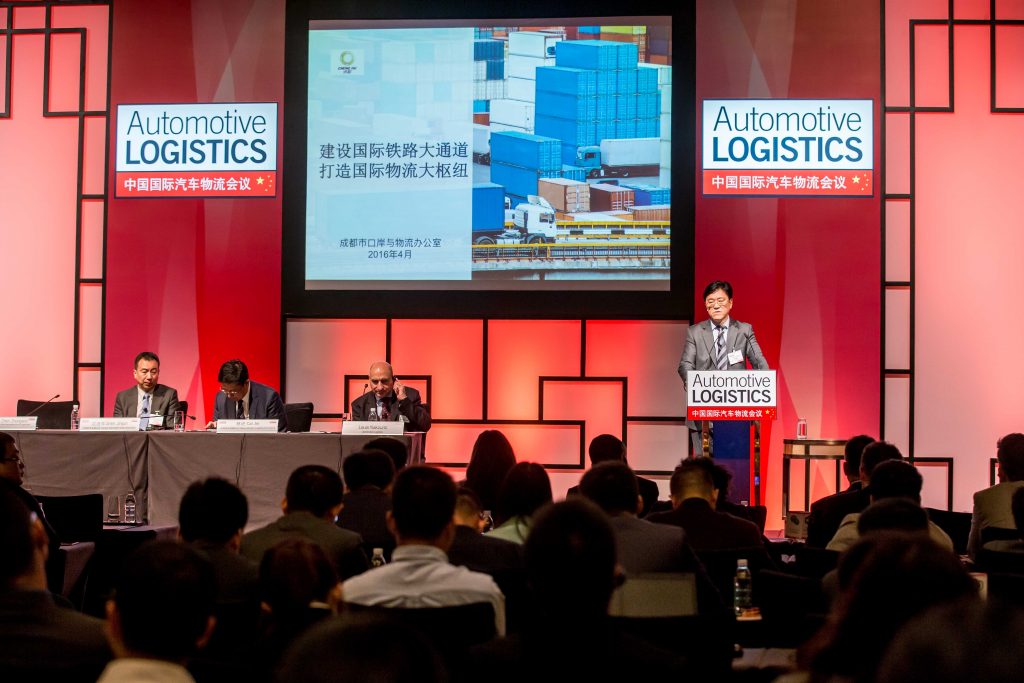 Chen Zhongwei, from the Chengdu Municipal Port and Logistics Office, said Chengdu was aiming to run 3,000 trains between the city and European destinations by 2020
Chen Zhongwei, from the Chengdu Municipal Port and Logistics Office, said Chengdu was aiming to run 3,000 trains between the city and European destinations by 2020Although the exact source and nature of investments around these routes is still to be determined, there has been growth in activity in long-distance rail between China and Europe. Despite a number of these routes existing for decades, with some logistics providers offering automotive services along them for close to a decade, government interest – including financial support and subsidies – has encouraged further activity.
Chen Zhongwei, the director of the Chengdu Municipal Port and Logistics Office, pointed to the development of the rail links as a way to overcome Chengdu’s historic disadvantages as a basin city that is far from seaports and not directly on the Yangtze River. He said local authorities were now expecting to see 400 freight trains this year between Chengdu and Europe, up from around 100 last year.
As well as the existing Chengdu-Lodz, Poland express route – a direct, non-stop link with a delivery lead time of around ten days that already carries some automotive spare parts – Chengdu will see connections open this year to both Moscow, Russia and Istanbul, Turkey. Chen said the port’s ambition was to see as many as 3,000 trains per year by the end of the decade, with automotive freight a key target.
International logistics companies including DB Schenker, Gefco, DSV and DHL, as well as Chinese players such as Beijing Changjiu and Changan Minsheng, have been fast developing services that include moving car parts, knockdown kits and finished vehicles to and from China. Gefco, for example, is currently running trials that include imports of BMW vehicles from Germany into Chongqing by rail, as well as exports of heavy trucks from China to Belarus, according to Yves Suinat, network sales steering director.
Chris Tiffany, regional vertical lead for Asia Pacific at DSV – which recently acquired UTI Worldwide – said this company was now running weekly block trains between Harbin and Europe, in partnership with Beijing Changjiu, and the ports of Dalian and Harbin. “We see these not only as important links for China, but also for onward connections to Korea and Japan,” he said. “Eventually, links could open up to south-east Asia through Myanmar, Laos, Malaysia and Thailand.”
Although many questions around it remain, including balancing freight flows in both directions and the viability of such services without government support, manufacturers are increasingly using the service as a regular freight flow or expedited option. David Zhang revealed that Delphi is now using a regular, weekly service between Hamburg and Chongqing. Magnus Ödling from Volvo Cars revealed that the carmaker started using rail services between Europe and China last year.
“The rail connections are becoming more and more household. So far we use it not as a structural transport mode, but for speeding up a very long supply chain between Europe and China,” he said.
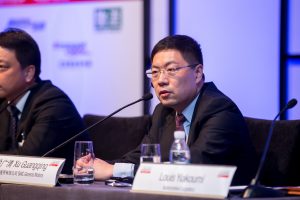 SGM’s Xu Guangqing said that the growth of production and sales in western China was encouraging the use of long-distance rail routes between Europe and China
SGM’s Xu Guangqing said that the growth of production and sales in western China was encouraging the use of long-distance rail routes between Europe and ChinaAl Lindsey from Changan Ford said that, although questions remained about empty return flows, opening up such services would be key in “removing barriers” for China’s supply chain. “This will help spur the economy and also build relationships with European countries and those in between,” he said. “It's a great concept.”
Andreas Subbe at Continental said the tier supplier had also trialled the service to Chongqing and expects to use it more, as production and supplier output grows in western China. “I also expect the service to further develop links to other parts of east Asia and South-East Asia,” he said.
SGM’s Xu Guangqing credited the development of China’s western regions as part of the reason why there was growing interest in One Belt, One Road logistics routes. “I think that these routes have a great future in China, especially as western China develops further,” said Xu. “As OEMs establish more factories in western China, like Chongqing and Chengdu, and consumer markets grow further, there is a lot of value in these routes, in helping us to better serve new customers.”[sta_anchor id="4"]
Towards advanced logistics planningWhile the Silk Road rail solutions have done much to capture the imagination of governments and logistics providers (as well as the media), it is far from being the most significant development to come from China’s expanding supply chain and automotive footprint. Automotive freight and finished vehicles along the rail routes are still relatively small compared to both traditional sea freight and internal logistics flows in China.
As carmakers and tier suppliers in China increasingly manage supplier and distribution networks that are stretched across the country and the globe, they require better logistics planning and engineering to ensure well-utilised transport assets, lower inventory and lead times.
Al Lindsey, for example, highlighted requirements for more value-added logistics services across Changan Ford’s extended supply chain. Although the joint venture has expanded its manufacturing base in Chongqing, last year it also opened a new assembly plant in Hangzhou, outside Shanghai, and this year it will open another plant in Harbin, in the northernmost province of Heilongjiang, adding more complexity to inbound and outbound logistics – but also more opportunity for network engineering.
“That gives us the chance to incorporate volumes into our network planning so that we can consolidate freight movements and flows between the east, north and south west,” Lindsey said.
 "Currently our inbound logistics is driven by suppliers, and putting an LLP between us and our suppliers would help. It's a big challenge but we're starting this year in Chongqing. We expect the project to roll through to 2017" - Abutan (Al) Lindsey, Changan Ford
"Currently our inbound logistics is driven by suppliers, and putting an LLP between us and our suppliers would help. It's a big challenge but we're starting this year in Chongqing. We expect the project to roll through to 2017" - Abutan (Al) Lindsey, Changan Ford
Such complexity has led Changan Ford to reconsider how it manages inbound logistics. As with most manufacturers in China, the joint venture has typically left much of its inbound logistics to tier suppliers, which often hold inventory on its behalf; now, it is looking more closely at applying a North American or European model which would include centralised planning and the use of a ‘lead logistics provider’ (LLP) to consolidate inbound material.
“Currently our inbound logistics is driven by suppliers, and putting an LLP between us and our suppliers would help. It's a big challenge but we're starting this year in Chongqing,” he said. “We expect the project to roll through to 2017.”
Lindsey added that such an approach included a more strategic analysis of inbound logistics, including analysing trade-offs between the costs of transport and inventory holding and the opportunities to avoid lost production or premium overtime.
“There’s still a large chasm between the US market and China with regard to the flow of material inbound to the plant,” he said. “The JV has been effective at bringing parts to the plant and protecting the volumes needed to be competitive. But as the company matures and grows into many factories, we have to start looking at the cost of how we do business.”
Joint ventures like Changan Ford typically rely almost entirely on the logistics subsidiary of their Chinese partner for transport services within China (such as Changan Minsheng for Changan Ford, or Anji for SGM). An effort to both control logistics more centrally and use these providers more like American or European-style LLPs, including for planning and engineering, would mark an important shift in development for both manufacturers and providers in China.
 Magnus Ödling said that Volvo Cars would 'go live' with its new logistics network, system and providers this summer
Magnus Ödling said that Volvo Cars would 'go live' with its new logistics network, system and providers this summerAnother company that is taking a more strategic approach to managing its logistics flows and logistics providers in China is Volvo Cars. The carmaker has an assembly plant in Chengdu, along with a second in Daqing, in Heilongjiang province in the north east, and an engine plant in Zhangjiakou, in Hebei province, north of Beijing. According to Magnus Ödling, Volvo is currently integrating domestic and international flows into a transport management system (TMS) and building up an in-house logistics management team. It recently completed tenders for both its international and domestic inbound network; the new setup will “go live” this summer.
“We will have a new organisation, a new TMS, new processes and a new portfolio of carriers, including a mix of global, regional and domestic Chinese players across all modes of transport,” he said.
Volvo Cars’ new network will include changes to how it imports material from Europe and the rest of the world. This year it will start shipping material out of two consolidation hubs in Europe instead of only one, while by the end of the year it will target 5-7 direct shipments from tier suppliers in Europe to China.
“For Daqing, we are planning to do this [direct supplier shipments] as a strategy for anything that has more than one 40ft container per week, for example,” Ödling said. “That can have a big impact, allowing us to look closer at, for example, packaging solutions for individual flows, because then you don't mix with other suppliers and origins.”[sta_anchor id="5"]
Outbound steps away from chaosChina’s need for higher quality logistics also extends to outbound vehicle logistics.
Multimodal transport routes are increasingly in demand, partly in response to new plant and distribution locations and partly to changing regulations.
The Yangtze River, which connects Chongqing in the west to Shanghai, with major cities like Wuhan in between, continues to be a growing artery for automotive and freight trade. Logistics and shipping companies are also adding more ro-ro vessels to serve short-sea routes along the east coast, including Beijing Changjiu’s CDC International and divisions from Anji Automotive, the logistics arm of the SAIC Group.
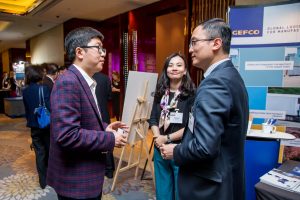 China’s automotive rail services are also growing: Gao Feng, president and general manager of China Railway Special Cargo Automobile Logistics, the subsidiary of the government-owned China Railways responsible for moving finished vehicles by rail, revealed that it moved 1.9m vehicles by rail last year, which it expected to rise to around 2.5m vehicles this year. Gao said the rail company currently had around 9,000 rail wagons for moving vehicles and planned to invest in as many as 2,500 more this year.
China’s automotive rail services are also growing: Gao Feng, president and general manager of China Railway Special Cargo Automobile Logistics, the subsidiary of the government-owned China Railways responsible for moving finished vehicles by rail, revealed that it moved 1.9m vehicles by rail last year, which it expected to rise to around 2.5m vehicles this year. Gao said the rail company currently had around 9,000 rail wagons for moving vehicles and planned to invest in as many as 2,500 more this year.
Such modes are expected to rise even more after the new GB1589 regulation for car carrier dimensions comes into force this July. This law sets a new, longer maximum length – 22 metres – than the current limit of 16.5 metres for existing car carriers, but loading factors are expecting to drop substantially as the government cracks down on common overloading and extended carriers are phased out over a two-year period.
The truck changes will affect some 30,000 car transporters in China (some estimate even more), with the cost of adapting existing equipment or buying more and the cost of lower load factors both expected to be substantial. However, China’s logistics experts are broadly optimistic that the change will put the industry on the right path towards modernisation.
 “This new regulation is a good thing, it will help us to become a stronger industry,” said Ma Zengrong from CALA. “I believe it will help China’s automotive logistics on the way to matching our counterparts in developed countries.”
“This new regulation is a good thing, it will help us to become a stronger industry,” said Ma Zengrong from CALA. “I believe it will help China’s automotive logistics on the way to matching our counterparts in developed countries.”
Ma added that government ministers have already been carrying out campaigns on the issue and said that CALA would be organising an imminent event with major industry players to discuss the impact of the regulatory costs.
Al Lindsey said the changes would lead to a more strategic approach to load building and routing for Changan Ford. “We have a team working on how to leverage our network and reduce the impact by increasing the density of loads that we ship out,” he said. “It forces us to look at how we optimise low volume regions of the country and begin thinking beyond that.”
SGM’s Xu Guangqing, while admitting that cost would rise substantially, also suggested the new regulations would help modernise the sector. “The government wants to try to remove some chaos from our sector; we have a lot of chaos in automotive logistics right now,” he said.
 BMW's Al Cardona said that new trucking regulations would force OEMs to accept new innovations
BMW's Al Cardona said that new trucking regulations would force OEMs to accept new innovationsExecutives also acknowledged the regulatory changes would be likely to force manufacturers to consider new technology and innovations. Al Cardona, head of finished vehicle logistics and customs for BMW China, pointed to the need for technological adaptation, whether it was different transport modes or equipment.
“Quality, automation, innovation, it's a given. As OEMs we can't deviate from that. There are some concepts in the logistics industry that are 100-years-old and must change,” he said. “If cars need to come by rail or barge or using convertible trailers, then why not? Certainly as an OEM, we are happy to support technologies that will help us to gain a competitive advantage.”[sta_anchor id="6"]
China manufacturing 4.0Supply chain executives acknowledge that the industry must move strongly to reduce costs and modernise its processes. Rising costs in Chinese labour costs and production are already putting pressure on the competitiveness of the country’s more traditional exports, including consumer goods and electronics, while in the automotive sector it could result in production moving to other markets, whether the US, Mexico or south-east Asia.
“In China we are competing with global factories – not just those of GM in the US, but also with OEMs around the world,” said SGM’s Xu, who highlighted the high labour and real estate costs around his company’s traditional base in Shanghai. “We cannot just look at our logistics KPIs and performance, as that would be misleading. We need to look at technology and innovation across functions and across other industries, such as internet services.
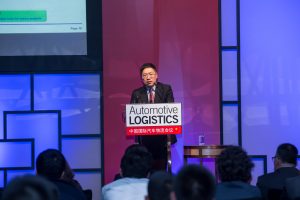 SGM's Xu warned that car manufacturing could be made obsolete if companies weren't willing to innovate and adapt new technologies
SGM's Xu warned that car manufacturing could be made obsolete if companies weren't willing to innovate and adapt new technologies“If we don’t innovate and stay competitive, maybe one day GM and Ford vehicles will be built by a contract manufacturer like Foxconn,” he added, referring to the company that builds iPhones in China.
Part of avoiding this fate and staying competitive in the supply chain would be for OEMs and logistics providers to focus more on new technology, said Xu, including automated equipment, more IT integration and connected, ‘internet of things’ solutions.
China’s government is hoping to push local manufacturers further in this direction with its ‘Made in China 2025’ programme.
Stephen Dyer, partner at consultancy Bain & Company, pointed out that despite China’s many advances it still trails the US and western Europe in productivity (although some of its automotive factories are exceptions). Made in China 2025 – which includes incentives for new equipment and strengthening broadband links – is intended to further integrate digitalisation, improve quality and efficiency, reduce emissions and increase R&D spending, among other things.
“China’s strategy is similar to Germany and the US, but with an emphasis on integration of IT and manufacturing,” Dyer said.
He pointed to examples that would benefit logistics and the supply chain, including the adoption of ‘big data’ analytics to improve tracking and forecasting and the use of more robots and inventory optimisation equipment, such as ‘iBin’ systems that can automatically track and reorder stock.
Carmakers in China are investing in more logistics automation and IT technology. SGM’s Xu pointed by way of example to rising use of automated sortation conveyors and highbay storage systems for the receipt and storage of goods and growing use of automated guided vehicles (AGVs) to move material to the line side.
“Currently we are still focusing on the reception, storage, feeding and off-line processes, but Germany and the US are way ahead of China in such automation,” he said. “So far, we have also only used RFID in tracking vehicles in storage, for example. More has to be done.”
Rui Zhu, director of material planning and logistics for Chery Jaguar Land Rover, which opened a new factory early last year in Changshu, outside Shanghai, also discussed investments in automated logistics and material handling equipment at its factory, including AGVs.
“If we work three shifts a day, we need three sets of workers,” said Rui, “but AGVs work 24/7.”
He also pointed to a conveyor system used at the plant to handle metal racking and large parts, RFID scanning used to scan material in and out of the receiving dock, an automated pallet washing area and a GPS-based outbound vehicle tracking system.
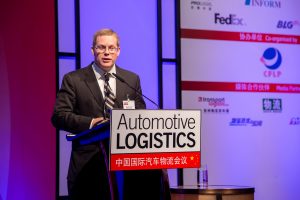 Bain's Steve Dyer said that 'Made in China 2025' was an effort to improve Chinese productivity in the face of rising costs and changing technology
Bain's Steve Dyer said that 'Made in China 2025' was an effort to improve Chinese productivity in the face of rising costs and changing technologyBoth Dyer and Xu acknowledged that such systems, while advancing productivity in China, were not examples of ‘Industry 4.0’ levels of connected technology and automation (“they are more like ‘Industry 3.0’ or ‘3.5’,” said Dyer). Nevertheless, China-based OEMs are making efforts to improve logistics in an increasingly complex supply chain.
Whether improvements come from ‘big data’ analytics or a ‘back-to-basics’ approach, executives see plenty of room for cost improvement. Al Lindsey, for example, said that Changan Ford could reduce logistics costs substantially by achieving better scheduling stability in production and supplier ordering.
“Stability would assist our logistics provider in developing more disciplined processes and maybe focusing on the cost of that business as well,” he said.
Andreas Subbe from Continental echoed his comments. More stable production and forecasts would help to reduce the inventory that tier ones hold for OEMs, and shrink the number of warehouses needed, he agreed.
“We are hoping to have more stability in the supply chain, which would allow us to reduce inventory and improve planning,” he said. “This is an area where we need help from OEMs.”[sta_anchor id="7"]
A fiercer futureThe Chinese automotive market and economy may face more uncertainty this year. Vehicle sales are rising, but could reverse following the end of tax cuts or incentives. Further shocks to the stock market or the global economy will also be felt across China. Supply chain and logistics experts, therefore, will continue to balance the risk of economic downturn against their plans for further investment and expansion across the automotive supply chain.
Regardless of the short-term movements, however, China’s automotive logistics sector will face substantial change over the coming years, some of which may be driven by increased volume and expanding geography, yet more of which may be the result of containing costs amidst slower growth and increasing competition.
-20160421-8465-150x150.jpg) "We are hoping to have more stability in the supply chain, which would allow us to reduce inventory and improve planning. This is an area where we need help from OEMs" - Andreas Subbe, Continental Automotive
"We are hoping to have more stability in the supply chain, which would allow us to reduce inventory and improve planning. This is an area where we need help from OEMs" - Andreas Subbe, Continental Automotive
Either way, manufacturers will require more coordinated and sophisticated management of their logistics networks. They, along with logistics providers, will also need to adapt to new technology and IT processes in the supply chain.
As if that wasn’t enough, China may well be on the verge of cultural changes that will impact vehicle sales and usage, whether it be restrictions to urban driving, more electric vehicles, car sharing or internet car sales.
“With the growth in taxi and car sharing apps and automated driving in the coming years, maybe people in China won’t even want to buy a car in future,” said SGM’s Xu. “I want to raise the alarm to pay attention to companies like Uber, who in future will perhaps deliver your parts and your cars. We have to be ready to innovate and prepare for a different future.”
For now, however, vehicle purchases remain important to the “Chinese dream”, as Andreas Subbe from Continental described it, and the industry will still need robust logistics services across China and to global markets.
Those companies that succeed will be those flexible enough to deliver on ‘new, old’ services like long-distance rail along the old Silk Road, as well as integrate ever-changing internet technology and automation.
In either case, manufacturers and logistics providers in China should expect the competition to be fierce.
Automotive Logistics China is part of the global Automotive Logistics series of conferences.
The next conference in the series is The Supply Chain Conference, on inbound and spare parts, May 17-19th in Atlanta, Georgia.
The next conference to be held in Asia will be Automotive Logistics India in Delhi towards the end of this year.
Automotive Logistics China 2017 will take place in Shanghai.
Topics
- Asia
- Asia
- asia
- Asia Pacific
- Asia Pacific
- Chery
- China
- China
- DSV
- europe
- Europe
- features
- Finished vehicles
- GM
- Government and policy
- Inbound
- In-plant logistics
- Integrated Logistics Providers
- Interviews
- Inventory management
- IT
- middle east
- Middle East
- Middle East and Africa
- Nissan
- North America
- north america
- OEMs
- Policy and regulation
- SCM
- Tier suppliers
- Trucking
- UPS
- Volvo Cars

























![Global[1]](https://d3n5uof8vony13.cloudfront.net/Pictures/web/a/d/s/global1_726550.svgz)




